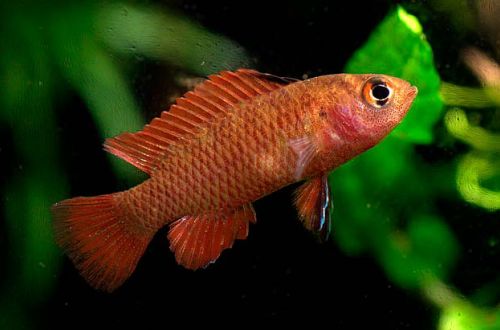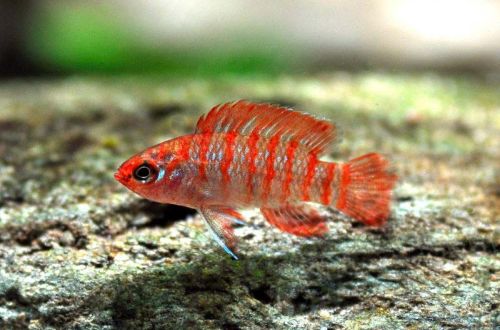
Corridor of Goss
Corydoras Goss or Corey Goss, scientific name Corydoras gossei, belongs to the family Callichthyidae (Shell catfish). The fish is named after the researcher Dr. JP Gosse, who first discovered and described this species. It comes from South America from the Mamore River basin, located on the border of the Brazilian state of Rondonia and northeastern Bolivia.

Contents
Description
Adult individuals reach a length of about 5 cm. The color of the body is brown with a dark yellow belly. The drawing consists of numerous light dots. The fins are translucent, brownish stripes are visible on the tail.
Brief information:
- The volume of the aquarium – from 80 liters.
- Temperature – 24-28°C
- Value pH — 6.0–7.5
- Water hardness – soft (1-10 dGH)
- Substrate type – sand or gravel
- Lighting – moderate or bright
- Brackish water – no
- Water movement – light or moderate
- The size of the fish is about 5 cm.
- Food – any sinking food
- Temperament – peaceful
- Keeping in a group of 4-6 fish
Maintenance and care
Corydoras Gossa is easy to maintain and does not impose high requirements on the composition of water, diet, gets along well with other types of fish. Can successfully adapt to life in most freshwater aquariums. Suitable for both beginners and experienced aquarists.
Optimal tank sizes for 4-6 Cori catfish start at 80 liters. Since they spend a significant part of their lives at the bottom, the main emphasis in the design is given to the lower tier. It is recommended to use a sandy or fine gravel substrate. Soil particles should not contain sharp edges so as not to injure the antennae of the fish. It is necessary to provide several shelters where the fish could hide. Driftwood and thickets of plants will become excellent shelters, any other decorative elements of decor can perform the same function. The rest of the design is largely dependent on the personal taste of the aquarist.
When keeping, it is important to ensure and maintain the hydrochemical composition of water in the acceptable range of pH and dGH values and to prevent the accumulation of organic waste. To this end, the aquarium is equipped with a productive filter and regular aquarium maintenance procedures are carried out, such as weekly replacement of part of the water with fresh water and removal of food residues, excrement, rotting plant leaves and other debris.
Food. An omnivorous species, it will accept most popular dry and freeze-dried foods (flakes, granules, tablets, etc.), as well as live and frozen products from daphnia, brine shrimp, bloodworms and others. It is advisable to combine different types of food to provide a varied diet.
behavior and compatibility. Peaceful friendly fish, gets along well with many other non-aggressive species of comparable size. Prefers to be in the company of relatives, so it is desirable to maintain a group size of at least 4-6 individuals.





